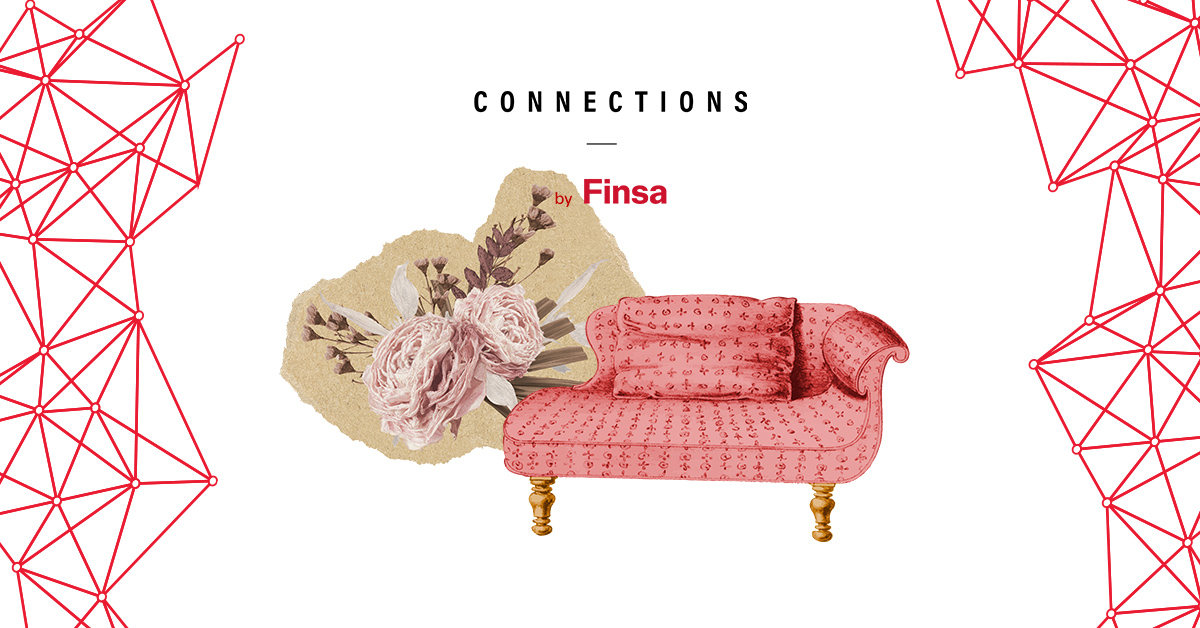Ecology, recycling, vintage and retro trends, circularity, an ethical approach to productions and the use of natural materials are some of the pillars on which the world of design, interior design and fashion has been based on for some time now. And there is a movement that brings it all together and sums it all up. It is called craftcore, the new craftsmanship that recovers traditional trades ad adapts them to our time.

What is craftcore?
It is the sustainable and creative connection between the traditional and the new, which praises the handmade, unhurried, outside of passing fashions, which goes beyond the aesthetic to rethink both the spaces we inhabit and even the ways of living.
In the age of speed, this wave of craftsmanship is a revolution. It is also a true luxury, although not in its usual dimension. Craftcore refers to that luxury that is discreet, without ostentation, which arises from the exclusivity of things. A conscious luxury.
Ver esta publicación en Instagram
Today’s craftsmanship, however, involves cultural tradition and craft with innovative thinking. It is, in a sense, respecting time, both the time spent making an object and the time craftsmen spend honing their skills and improving their own style. And time, as you know, is money.
Characteristics of craftcore
So what makes something craftcore? Let’s review some characteristics that are part of its DNA:
Back to the origins
Craftcore is sewing, repairing, carving, painting, sculpting, braiding, nailing. Returning with today’s eyes (and even with tomorrow’s in some cases) to the roots of ancestral crafts to recover and enjoy their processes and values. Creativity hand in hand with authenticity.
Ver esta publicación en Instagram
Technology, an ally
New tools help shape Works without altering the essential process of their craft.
Slow, unhurried production
Artisan, non-standardised, slow production is more humane. Why? Because, unlike industrial manufacturing, manual work allows for creativity at every stage of the process. It also means more responsible consumption.
An engine for emotions
The value of the handmade connects with what some call “craft emotions”. Craftcore pieces activate our senses, allow us to establish a deeper connection with the object itself and also with the brand. They are an expression of the artisan’s soul.
The sustainability pillar: health for people and the planet
The design industry is striving to become more and more sustainable. The new wave of craftsmanship fits perfectly with this philosophy. The human aspect, responsibility and respect for the entire creative process, from sourcing materials to recycling, are the key in the craftcore universe. We live in a time when it matters how and by whom the chair we sit on or the cup we drink from is made. Consumers have begun to prefer objects made to last over planned obsolescence.
Ver esta publicación en Instagram
Quality and long-lasting design
This element connects directly with the previous one. Quality craftsmanship is the opposite of any fast, throwaway, disposable consumer habits. The craftcore world is not subject to seasonality or ephemeral trends: they offer the best product quality and are designed and made to last over time, to accompany for generations. They seek to become contemporary classics.
A wide range of materials to experiment with
Luxury craftsmen are inspired by materials, by how they can manipulate them while remaining sustainable and guaranteeing a long life for the object they make. Some are of natural origin, such as wool, the cotton used to make macramé knots, a growing technique, esparto grass fibre – as used by the Bilbao women of Sagarminaga Atelier in this piece for a hotel in Marbella- or wood, a material whose properties reconnect us with nature and our origins.
@thelarksheadshop Taking you through the entire process for a custom macramé mountainscape #macrame #macramewallhanging
There are other materials that are more open to experimentation, such as epoxy resin, which is used to make jewellery, customise wooden furniture or even to transform a surfboard into a unique piece of art. Or glass: Valencian artisans Sorribes have known how to adapt to their time, after three generations, with an unusual capacity for product customization. Chef Dabiz Muñoz relied on them for the decoration of the new Streetxo restaurant in Madrid:
@ronilangley Black or brown surfboards????
Ver esta publicación en Instagram
Reaction to the mobile dominance
“Craftsmanship will become fundamental in design”. The phrase comes from Jonathan Anderson, creative director of Loewe. He said it in an interview with Dezeen magazine five years ago. The Northern Irish designer said at the time that the renaissance of handmade manufacturing based on traditional crafts was the answer to the overdose of digital technologies in today’s world, to “lack of reality”.
That was the reason why, in 2016, he launched the Loewe Craft Prize, an annual competition that rewards the best craftsmanship with artistic ambition from around the world. The winner of the 2022 edition of the prestigious 50.000 euros prize was South Korean sculptor Dahye Jeong, who works from home. She won with a work called A Time of Sincerity, a huge, ethereal vessel woven from the finest horsehair using an ancient craft technique. A piece that, as has been said, one could not tell whether it belongs to the past or the present. It is the same concept behind the works in this year’s competition:
Ver esta publicación en Instagram
Ver esta publicación en Instagram
Harry Styles’ cardigan and TikTok
However, it is the digital world that is resposible for much of the popularity of craftcore. TikTok in particular. During the months of lockdown due to the global pandemic, there was a growing interest in arts and crafts on this social network. And there was a moment that went viral: when Singer Harry Styles performed on The Today Show wearing a colourful cardigan by JW Anderson (yes, Jonathan Anderson).
The desing became a challenge for tiktokers, who rushed to imitate it. The designer was delighted to have his crochet jacket “stolen” and ended up sharing patterns and measurements so that people could make it at home by hand:
@lilbittylivie I made myself a knock off of harry styles’ jw anderson cardigan lmao #fyp #foryou #foryoupage #harrystyles
High-end brands are also jumping on the bandwagon
The big fashions brands, for example, have just realised the emotional value and potential of what is handmade. Dior, Fendi, Valentino or Alexander McQueen have mixed different traditional textile techniques (from crochet to patchwork to beadwork) in their latest collections.
Loewe, of course,has been incorporating the handmade for much longer. They did so with contemporary basket maker Idoia Cuesta, with whom they collaborated on a collection of bags and vases. And they have once again called on the textile creator from San Sebastian based in Lugo to continue along the craftcore path, in this case for the Loewe Chairs project: handmade chairs reinvented by artisans through the act of weaving and embellishing old and new, woven with leather, raffia or metallic fibres, transforming everyday objects into unique pieces.
Ver esta publicación en Instagram
Zara, the flagship of Inditex, has also caught the new wave of craftsmanship, opting for handmade products using traditional techniques. One of the latest incursions into this field is a collection of bags made in collaboration with the Asociación de Redeiras Artesás Illa da Estrella de Corme (Association of women artisan net menders from Illa da Estrella de Corme), created to remember our roots through the upcycling method, with used fishing material given a new life and a new use.
Luxury brand CLO Madrid, meanwhile, has also embraced the artisanal revival. Their porcelain candleholders created by ceramist of Sargadelos (two centuries of tradition combined with a modern aesthetic) demonstrates it. Maison Hermès took notice of the surrealist, neo-castizo and daring use of form by Girona-based ceramics, art and design studio Bussoga, and called on them to design the patterns for a collection of ties:
Ver esta publicación en Instagram
Ver esta publicación en Instagram
Are you already clear about the craftcore trend and how to apply it to habitat and interior design? Share your impressions on social media using the hashtag #ConnectionsByFinsa.




